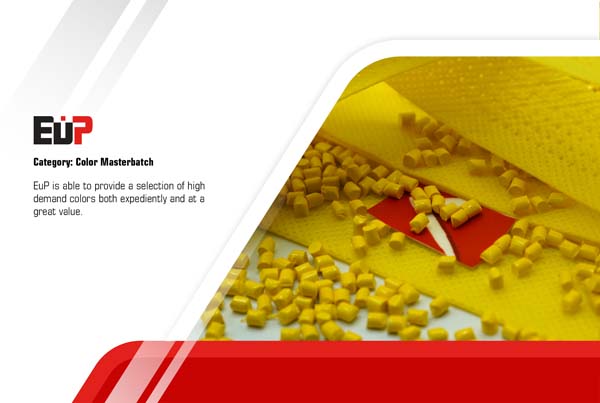 Color masterbatch
Color masterbatch
The melt coloring of plastics is one of the most functional value added features a resin producer, compounder, or parts fabricator can impart to their products. It not only provides desired appearance properties that help sell the product, but it can also enhance several other properties, such as stability toward UV light. In addition, melt coloring usually eliminates the need for a separate, off-line, painting step. Overall manufacturing costs can thereby be reduced.
Once the color system is incorporated into the plastic matrix, however, it becomes an integral part of the material and may alter the engineering, performance, and processing properties in ways not considered during the design and formulation of the new material. Coloring, frankly, is usually viewed as the end-users problem, and the ball lands in the court of the color formulator.
This specialist (who is usually untrained in the finer points of polymer science) is then left with the task of navigating through what often seems to be an obstacle course of known and unpredicted interactions while trying to give the end-user an economical color package that will meet the product's appearance requirements.
The task is even more critical in the case of high performance polymer blends and alloys, whose highly valued engineering and performance properties are often sensitive to small compositional changes.
THE MAJOR CLASSES OF COLORANTS
The colorants used in plastics fall into two very broad categories: pigments and dyes. Pigments are defined as colorants which do not dissolve in the plastic matrix of interest, whereas dyes are colorants that do go into solution. Pigments therefore reside as a separate phase.
Consequently, there are phase boundaries to consider, and these can be crucial to the end-user.
INORGANIC PIGMENTS
Inorganic pigments are metal salts and oxides which can predictably impart color to a substrate. Most of these pigments have an average particle size of about 0.2-1.0 microns. The manufacturers take great pains to eliminate agglomerates with particle sizes above 5 microns.
With few exceptions, inorganic pigments are inexpensive raw materials. Because of their relatively low color strength they are not always the best value.
Some good properties which many inorganic pigments share are:
- easy to disperse (relatively little work is required to break down the pigment,
coat it with the plastic, and distribute it uniformly);
- good heat and weather resistance;
- little, if any, reactivity.
Make note of this: COLOR SELLS! If you want a new high performance thermoplastic alloy or blend to reach the widest number of appropriate end user markets, you have to be able to color it in a cost effective manner that does not harm its performance properties.
Barriers to cost effective coloring include:
• the material's inherent color and opacity;
• chemical incompatibility with one or more polymeric or compatibilizer components;
• physical incompatibility with one or more polymeric components (many materials will not physically accept dyes, e.g.);
• stringent heat stability and/or weathering requirements. Of these barriers, the one that is most overlooked is the first.
Many of the new thermoplastic materials coming into the marketplace are blends and alloys that are specifically engineered to provide a combination of the properties of the individual polymers.
Often these materials combine crystalline and amorphous polymers with an impact modifier. The products of these marriages often contain a maze of phase boundaries that result in light scattering (milkiness) equivalent to as much as 0.5% titanium dioxide.
Obtaining high chroma colors (e.g., some electrical code colors or even a jet black) in the presence of this inherent milkiness becomes an expensive proposition. Often so much color has to be added to the material formulation that critical material properties are affected - a double whammy, cost and performance.